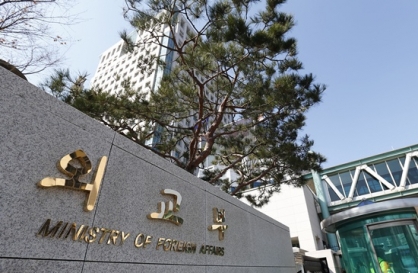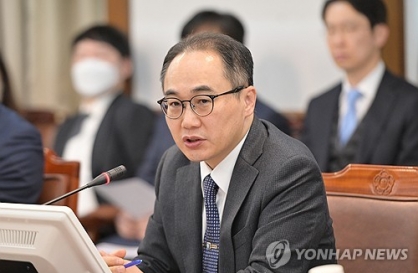Retail rent prices rise in world’s expensive shopping districts
Seoul’s Myeong-dong ranked as world’s 9th-most expensive shopping destination
By Korea HeraldPublished : Nov. 20, 2012 - 20:02

Although a slower global economy and continued uncertainty surround the eurozone, global prime retail rents were generally resilient over the year to June 2012. According to C&W’s annual report titled “Main Streets Across the World 2012,” an expansion of 4.5 percent provided for a largely unchanged and positive growth picture, with rents rising in 147 of the 326 locations surveyed, but declining in 49.
Rental increases were again driven by the strong performance in the Americas and Asia-Pacific; however, it was the former region which registered the largest expansion (10.9 percent). Alongside emerging South American markets ― which continued to benefit from higher incomes and increasing retailer demand despite less benign economic conditions ― rises in North American locations had a stronger impact than last year.
Notwithstanding a slight deceleration in the regional growth rate (8.6 percent), occupier activity in Asia Pacific remained buoyant. Retailers continued to compete for the limited prime space in the most coveted destinations of Hong Kong, India and South Korea, and the region was home to five of the top 10 most expensive global locations.
Unsurprisingly, eurozone markets suffered from the economic slowdown and weak retail sales, and a similar trend was also evident in some Eastern European countries. Nevertheless, EMEA prime values were up by 1.7 percent in June on the same period last year, often boosted by requirements from luxury brands.
There were a number of movements in the ranking of the most expensive locations in each country. Most notably, the surge in demand and leasing activity in Causeway Bay, Hong Kong, prompted a 34.9 percent increase in rental values, overtaking Fifth Avenue in New York as the most expensive retail destination in the world ― the first time Fifth Avenue has not been top in 11 years.
Meanwhile, rents on Paris’ Avenue des Champs-lyses also recorded a strong increase ― the second largest in Europe ― replacing Ginza, Tokyo, in third place. The main drivers behind global growth are not expected to shift much ― with growing structural demand in high-end locations, market globalization and luxury expansion in key developments. Although prime pitches will continue to attract interest, grade B space in Europe and North America will remain under downward pressure as retailers shy away from riskier propositions until economic conditions improve.
The Asia-Pacific region and South America will remain the main focus of many international retailers as they take advantage of new modern supply and gradually maturing retail markets ― but with new policies aimed at supporting retail, in India and China among others, potentially altering growth dynamics. While it is unlikely that the double-digit rental uplift seen in some of the world’s top retail destinations will spread out, such locations are expected to remain in high demand as they provide the best platform for strengthening brand image and presence.
Against a backdrop of anemic European trading growth, retailers continued to vie for Asia Pacific prime retail space, eager to tap into a generally younger and increasingly affluent middle class. Despite a slower expansion than in 2010/2011, occupier demand in Asia Pacific region remained robust and prime rents rose by 8.6 percent over the year.
The local market benefitted from a gradually evolving retail landscape comprised of several maturing quality shopping centers and high streets, with values rising by 19.1 percent.
Myeong-dong and Gangnam Station remained the most expensive locations in the country, but Garosugil was catching up as the number of leasing deals concluded over the year rose markedly, pushing rents up by 41.0 percent.
According to this survey, Seoul’s Myeong-dong is ranked as the world’s 9th-most expensive shopping destination for the second consecutive year. This district saw a significant growth of 705,166 won per square meter a month with a 16 percent increase in rent over the same period last year, while Gangnam Station had rents of 606,039 won per square meter a month and Garosu-gil 253,783 won per square meter a month respectively.
Regarding the luxury market in the Asia Pacific, combined with the more challenging trading conditions in Western markets, buoyant luxury sales in the Asia Pacific have shifted the focus of many luxury operators to the region ― encouraging a number of expansions and new entries. The domestic luxury market is still performing well, boosted by Chinese and Japanese tourists on shopping trips in Seoul.
Aside from the department stores where the majority of luxury shopping occurs, Cheongdam is the only luxury high street destination. Flagship stores include Louis Vuitton, one of the first to enter the market, alongside others such as Gucci, Prada, Ermenegildo Zegna, Armani, Cartier, Rolls Royce and Loro Piano.
By Dan Kim
The author is head of Retail Transaction, Cushman & Wakefield Korea, which consults corporate clients on leasing, sales and management services. ― Ed.
Rental increases were again driven by the strong performance in the Americas and Asia-Pacific; however, it was the former region which registered the largest expansion (10.9 percent). Alongside emerging South American markets ― which continued to benefit from higher incomes and increasing retailer demand despite less benign economic conditions ― rises in North American locations had a stronger impact than last year.
Notwithstanding a slight deceleration in the regional growth rate (8.6 percent), occupier activity in Asia Pacific remained buoyant. Retailers continued to compete for the limited prime space in the most coveted destinations of Hong Kong, India and South Korea, and the region was home to five of the top 10 most expensive global locations.
Unsurprisingly, eurozone markets suffered from the economic slowdown and weak retail sales, and a similar trend was also evident in some Eastern European countries. Nevertheless, EMEA prime values were up by 1.7 percent in June on the same period last year, often boosted by requirements from luxury brands.
There were a number of movements in the ranking of the most expensive locations in each country. Most notably, the surge in demand and leasing activity in Causeway Bay, Hong Kong, prompted a 34.9 percent increase in rental values, overtaking Fifth Avenue in New York as the most expensive retail destination in the world ― the first time Fifth Avenue has not been top in 11 years.
Meanwhile, rents on Paris’ Avenue des Champs-lyses also recorded a strong increase ― the second largest in Europe ― replacing Ginza, Tokyo, in third place. The main drivers behind global growth are not expected to shift much ― with growing structural demand in high-end locations, market globalization and luxury expansion in key developments. Although prime pitches will continue to attract interest, grade B space in Europe and North America will remain under downward pressure as retailers shy away from riskier propositions until economic conditions improve.
The Asia-Pacific region and South America will remain the main focus of many international retailers as they take advantage of new modern supply and gradually maturing retail markets ― but with new policies aimed at supporting retail, in India and China among others, potentially altering growth dynamics. While it is unlikely that the double-digit rental uplift seen in some of the world’s top retail destinations will spread out, such locations are expected to remain in high demand as they provide the best platform for strengthening brand image and presence.
Against a backdrop of anemic European trading growth, retailers continued to vie for Asia Pacific prime retail space, eager to tap into a generally younger and increasingly affluent middle class. Despite a slower expansion than in 2010/2011, occupier demand in Asia Pacific region remained robust and prime rents rose by 8.6 percent over the year.
The local market benefitted from a gradually evolving retail landscape comprised of several maturing quality shopping centers and high streets, with values rising by 19.1 percent.
Myeong-dong and Gangnam Station remained the most expensive locations in the country, but Garosugil was catching up as the number of leasing deals concluded over the year rose markedly, pushing rents up by 41.0 percent.
According to this survey, Seoul’s Myeong-dong is ranked as the world’s 9th-most expensive shopping destination for the second consecutive year. This district saw a significant growth of 705,166 won per square meter a month with a 16 percent increase in rent over the same period last year, while Gangnam Station had rents of 606,039 won per square meter a month and Garosu-gil 253,783 won per square meter a month respectively.
Regarding the luxury market in the Asia Pacific, combined with the more challenging trading conditions in Western markets, buoyant luxury sales in the Asia Pacific have shifted the focus of many luxury operators to the region ― encouraging a number of expansions and new entries. The domestic luxury market is still performing well, boosted by Chinese and Japanese tourists on shopping trips in Seoul.
Aside from the department stores where the majority of luxury shopping occurs, Cheongdam is the only luxury high street destination. Flagship stores include Louis Vuitton, one of the first to enter the market, alongside others such as Gucci, Prada, Ermenegildo Zegna, Armani, Cartier, Rolls Royce and Loro Piano.
By Dan Kim
The author is head of Retail Transaction, Cushman & Wakefield Korea, which consults corporate clients on leasing, sales and management services. ― Ed.
-
Articles by Korea Herald




![[Weekender] Korean psyche untangled: Musok](http://res.heraldm.com/phpwas/restmb_idxmake.php?idx=644&simg=/content/image/2024/05/02/20240502050841_0.jpg&u=)

![[Eye Interview] 'If you live to 100, you might as well be happy,' says 88-year-old bestselling essayist](http://res.heraldm.com/phpwas/restmb_idxmake.php?idx=644&simg=/content/image/2024/05/03/20240503050674_0.jpg&u=)











![[Herald Interview] Director of 'Goodbye Earth' aimed to ask how we would face apocalypse](http://res.heraldm.com/phpwas/restmb_idxmake.php?idx=652&simg=/content/image/2024/05/03/20240503050732_0.jpg&u=)
